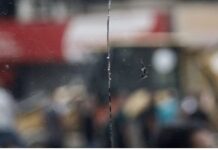MEE Staff
Middle East Monitor / July 31, 2024
The Palestinian group divides its leadership between those residing in the war-battered enclave and those in exile, mostly in Qatar, but also in Iran, Lebanon and Turkey.
Born out of the first uprising or ‘Intifada’ against Israel’s occupation of Gaza and the West Bank, the Palestinian movement Hamas claims it’s a freedom-fighting group trying to free Palestinians from Israeli subjugation.
The group, which was founded in December 1987 by Sheikh Ahmed Yassin, a Palestinian cleric who later became an activist, defines itself as a “Palestinian Islamic national liberation and resistance movement,” using Islam as its frame of reference.
Originating as an offshoot of Egypt’s Muslim Brotherhood, Hamas established its military wing, the Izz al-Din al-Qassam Brigades, to pursue the armed struggle against Israel with the aim of liberating historic Palestine.
But in 2017, the movement announced in its revised charter that it accepted the idea of a Palestinian state within the 1967 borders, without recognizing the statehood of Israel.
In recent years, many of the group’s high-ranking men have kept a low public profile in Gaza, evading assassination attempts by Israel, whilst others affiliated with the movement have opted to live in exile – mostly in Qatar, but also in Iran, Lebanon and Turkey.
Generally those residing in Gaza are believed to be more involved in military operations against Israel, whilst the political leadership is based abroad.
But who are Hamas’ most prominent figures running the group in what has become the enclave’s deadliest-ever war?
Ismail Haniyeh
Ismail Haniyeh, who served as the fourth Palestinian prime minister and the third political leader of Hamas, was assassinated by Israel on 31 July at a residence in the Iranian capital Tehran.
Hailing from a family of refugees expelled from historic Palestine in the 1948 Nakba, Haniyeh grew up in northern Gaza’s Al-Shati refugee camp.
When Hamas was established in 1987, he was among the group’s young founding members, aged 25 at the time.
Imprisoned by Israel for three years in 1989, Haniyeh was later among 415 Palestinian political activists, including senior Hamas leaders, deported by Israel in 1992 from the Gaza Strip, the West Bank and occupied East Jerusalem to southern Lebanon.
He eventually returned to Gaza in 1993, and in 1997 was appointed to lead a Hamas office.
In 2006, he was the head of the Hamas list that won the Palestinian legislative elections, and became the Prime Minister of the State of Palestine.
However, his premiership was short lived, as tensions between Hamas and its political rival Fatah developed into a bloody conflict that split the government into two.
Then-President Mahmoud Abbas dismissed Haniyeh from office on 14 June 2007 but Haniyeh refused to acknowledge the decree and continued to exercise prime ministerial authority in Gaza.
In 2017, he was replaced by Yahya Sinwar as the leader of Hamas in Gaza, and was instead elected as the head of the group’s political bureau.
Following the 7 October attacks on southern Israel, Haniyeh led discussions with mediators attempting to broker a ceasefire in Gaza and worked to help secure the release of Israeli captives in the territory.
Khaled Meshaal
Khaled Meshaal is one of the founding members of Hamas and also regarded as one of the group’s chief negotiators in attempts to broker a ceasefire in Gaza.
Born in the West Bank, his family fled to Jordan after the Six Day War, and he later spent time in Kuwait.
Meshaal’s father had worked in the Gulf nation when it was known for being a hotbed of Arab nationalism and pro-Palestinian sentiment.
Once Hamas was founded in 1987, Meshaal led the Kuwait chapter of the organization, but left the country when Iraq invaded in 1990. He later moved to the Jordanian capital, Amman.
In 1997, Israeli Prime Minister Benjamin Netanyahu sent a two-man hit squad to kill Meshaal in Amman who entered the country with forged Canadian passports.
The agents attempted to inject a slow-acting lethal chemical into his ear on a public street, but the operation was botched and the men were soon arrested.
At the time, King Hussein, the leader of Jordan, was outraged by the attack and rushed to negotiate a deal whereby Netanyahu would send over the antidote.
Following the incident, he was dubbed a “living martyr” by his supporters and would later become the recognized head of Hamas after the assassination of both Yassin and his successor Abdel Aziz al-Rantisi in 2004.
Under his leadership, Hamas won the majority of the seats in the Palestinian legislative election in 2006.
Meshaal stepped down as Hamas’ politburo chairman at the end of his term limit in 2017 and became the head of the group’s political bureau abroad.
Yahya Sinwar
The leader of the Hamas movement within the Gaza Strip, Yahya Sinwar, was close to Yassin and was known for founding the internal security bodies of Hamas.
Israel sentenced Sinwar to four life terms in the late 1980s.
He served 23 years for leading the group’s first security apparatus, Majd, which targeted and killed Palestinians it suspected of collaborating with Israel.
During his time in prison, Sinwar learnt Hebrew and read Israeli newspapers, moves that analysts said was aimed at better understanding his enemy.
In 2011, he was freed along with 1,047 Palestinian prisoners for Israeli soldier Gilad Shalit, who was abducted by Gaza fighters in a cross-border raid in 2006.
Sinwar returned to his position as a prominent leader in Hamas and was appointed head of the group’s in the Gaza Strip in 2017.
Mohammed Deif
Mohammed Deif has led Hamas’ military wing, the Izz al-Din al-Qassam Brigades, since 2002 and helped engineer the network of underground tunnels that run under Gaza and into Israel, allowing Hamas fighters to access the territory.
Born in Khan Younis at some point in the early 1960s, he joined Hamas around the time of the first Intifada and was arrested by Israeli forces for his activities in 1989.
He spent more than a year in an Israeli jail but returned to Gaza in the early 1990s where he ascended through the Hamas’ ranks.
Israel has long pursued Deif, accusing him of planning and overseeing bus bombings which killed tens of Israelis in 1996, and of involvement in the capture and killing of three Israeli soldiers in the mid-1990s.
He became the group’s military head in 2002 after his predecessor, Salah Shehade, was killed in an Israeli raid.
Israeli forces failed to assassinate Deif during a 2014 assault on the Gaza Strip, but killed his wife and two of his children. Hamas said he also survived another assassination attempt in July.
Marwan Issa
Marwan Issa, nicknamed the Shadow Man for his low public profile and ability to evade Israeli arrests and assassination attempts, was alleged to have been killed by Israel earlier this year, according to the White House.
Hamas has not confirmed whether Issa was killed in an Israeli air strike in March, but the elusive leader is known to have survived several assassination attempts since 2006, as well as air strikes on his home in Gaza in 2014 and 2021.
A presumed mastermind of the 7 October assault on southern Israel, Issa is thought to have played a significant role in attacks on Israel since becoming a deputy to Deif in 2012.
Issa spent five years in an Israeli prison after being detained for his involvement with Hamas during the first Intifada. In 1997 he was arrested again, by the Palestinian Authority, but was freed during the second uprising.
Despite his senior position, Issa was not photographed until 2011, when he made a surprise appearance in a picture with exchanged Palestinian prisoners.












